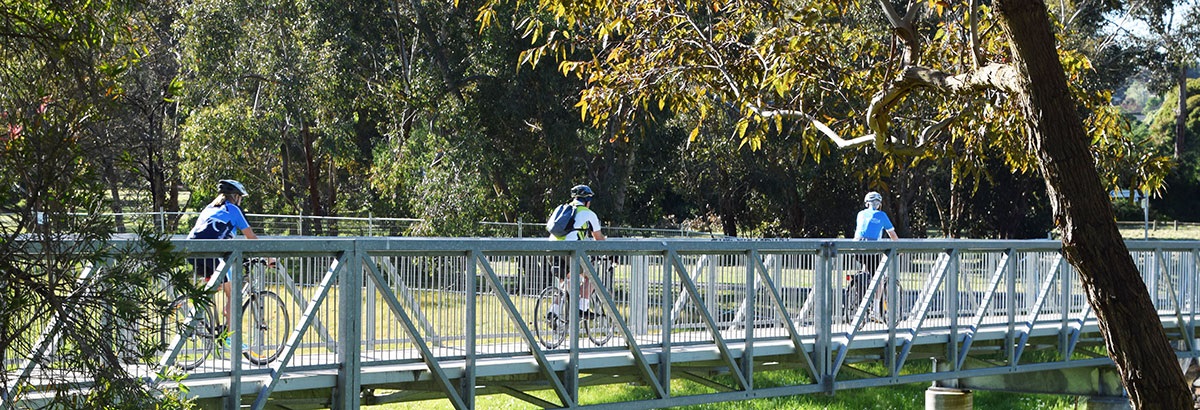Cycling in Maroondah

About
It's important that everyone in our community has access and opportunities to enjoy cycling in Maroondah.
Maroondah’s bicycle network has a wide variety of paths ranging from shared user paths, separated paths, on-road bicycle lanes and sharrows to provide people with safe, connected and calm environments to cycle.
When cycling on Maroondah’s bicycle network, apply good cycling practices and etiquette.
When everyone is courteous and mindful of other users of our streets, trails and pathways, everyone benefits. When everyone benefits we see increased community support for critical cycling projects.
Good cycling practice and etiquette
- Wear high visibility clothing that will make you more conspicuous to other road users.
- Move off the bicycle path if you need to stop (i.e. to make a phone call or attend to your bike).
- Stay on the designated off-road path. Cutting corners or using informal routes can damage vegetation and create unpredictable conflict points.
- Pedestrians are the most vulnerable users of roads, trails and shared pathways. Cyclists should slow down near pedestrians and give plenty of warning and room when passing. A little courtesy goes a long way. It’s nice to say ‘hello’ or ‘thanks’ as you pass. Extra care should be taken where the path may be crowded.
- Use your bell, warning device or call out to other particularly more vulnerable users to alert them of your presence. Consider moderating your speed particularly around children and pets that may be startled by your presence.
- Ride in a predictable manner to make your course and movement legible to others. A steady course and speed will reassure fellow users and allow them to safely make any adjustments to their course.
- Always be alert and travel at moderate speeds along paths that have private vehicle crossings. Travelling at a safe speed will allow you to see and hear any vehicles leaving their driveway. Drivers should always exit and enter driveways slowly and carefully check for pedestrians or cyclists and give way to you.
- Cyclists should be aware of riders of all abilities and ages. Adult riders (i.e. commuters) who ride at higher speeds need to show care when riding in an environment that may have younger riders.
- All cyclists should familiarise themselves with bike laws and safety and ride accordingly.
- Appropriate safety equipment (i.e. bike helmet) should always be worn.
Cycling rules
All road users, including cyclists are required to obey Road Safety Road Rules. Please refer to the latest iteration of the Victorian Road Rules for the complete set of rules.
Maroondah interactive map
Some of our significant walking and cycling trails are shown on our interactive map.
Select Walking & Cycling Trails on the map to see the trails, and zoom in to see more features, such as road and rail crossings.